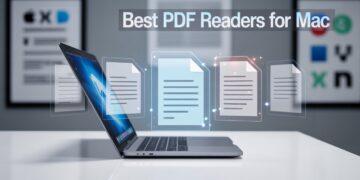In an era defined by digital acceleration, the learning and development (L&D) landscape is transforming rapidly. As we enter 2025, organizations are no longer just adopting eLearning as a supplemental tool but as a central component of their workforce development strategies. The top eLearning trends in 2025 reflect a shift toward personalization, measurable outcomes, immersive experiences, and business alignment. This comprehensive guide explores the most influential trends shaping digital learning and how organizations can adapt to thrive in this dynamic environment.
Why 2025 Is a Pivotal Year for eLearning
The shelf life of skills is shrinking, hybrid work is the norm, and digital literacy is non-negotiable. Businesses must invest in scalable, flexible learning ecosystems that foster continuous development and resilience. With economic uncertainty and talent shortages, maximizing the ROI of learning initiatives is now a board-level priority. The convergence of advanced technologies and evolving learner expectations makes 2025 a turning point in the eLearning evolution.
AI-Powered Personalized Learning Experiences
Adaptive Content Delivery
Artificial Intelligence is revolutionizing how we design and deliver training. Adaptive learning systems analyze individual performance data to tailor content in real-time. Whether a learner excels or struggles, AI adjusts the pace and complexity, ensuring a personalized path to mastery.
Predictive Skill Development
Beyond customization, AI can now forecast skills gaps and recommend targeted learning paths based on role requirements, performance metrics, and future job trends. Companies like IBM and Shell have implemented AI-based skills platforms that drive both individual growth and organizational agility.
Intelligent Tutoring and Chatbots
AI-powered chatbots provide real-time support, enabling learners to ask questions and receive immediate feedback. This “always-on” tutor model enhances engagement and reduces the reliance on instructors for basic queries.
2. Microlearning and Learning in the Flow of Work
Just-in-Time, Bite-Sized Content
Microlearning delivers short, focused modules designed for instant consumption. Whether through video, interactive PDFs, or scenario-based quizzes, these snippets align perfectly with shrinking attention spans and busy schedules.
Embedded Learning in Work Platforms
Integrating learning into platforms like Microsoft Teams, Slack, and Salesforce allows employees to access training exactly when and where they need it. This approach enhances relevance and adoption by removing the friction between work and learning.
Outcomes of Microlearning
Studies show microlearning improves knowledge retention by up to 80%. Organizations adopting this model report higher course completion rates and more consistent application of skills on the job.
3. Immersive Learning Through VR, AR, and XR
Enhanced Engagement and Realism
Virtual Reality (VR), Augmented Reality (AR), and Extended Reality (XR) are redefining experiential learning. These tools enable learners to practice skills in a safe, realistic environment—whether it’s simulating surgical procedures or navigating hazardous industrial zones.
Use Cases Across Industries
- Healthcare: VR surgical simulations
- Manufacturing: AR-guided equipment training
- Retail: Customer interaction simulations
ROI and Scalability
While immersive learning may require upfront investment, companies like Walmart and Boeing report measurable improvements in training speed, retention, and on-the-job performance. With the rise of more affordable headsets and mobile AR, scalability is becoming more feasible.
4. Gamification as a Learning Catalyst
Motivation Through Game Mechanics
Points, leaderboards, badges, and progress bars are more than just fun—they tap into intrinsic motivation and encourage continued participation. Gamification makes learning sticky, especially when tied to real-world rewards.
Simulations and Scenario-Based Learning
Beyond superficial mechanics, deep gamification involves problem-solving within realistic scenarios. Simulations allow learners to experiment, fail safely, and build competence through practice.
Examples of Effective Gamified Learning
- Sales Training: Interactive pitch simulations
- Compliance: Scenario-based decision trees with real consequences
- Leadership Development: Role-play games focusing on team management and conflict resolution
5. Skills-Based Learning and Business Alignment
From Content-Centric to Skills-Driven
Organizations are moving away from traditional course catalogs toward dynamic, skills-based learning ecosystems. This shift involves defining critical roles, identifying skill gaps, and curating personalized development plans.
Measurement and ROI
Success is no longer measured by completion rates but by tangible business outcomes: productivity, employee mobility, and retention. Modern L&D platforms now integrate with HR systems to track skill acquisition against key performance indicators.
Internal Talent Marketplaces
Skills visibility is also enabling internal mobility. Platforms like Gloat and Fuel50 help match employees with internal gigs, stretch assignments, and mentorship opportunities based on their evolving skill profiles.
6. Data-Driven Decision Making in L&D
Learning Analytics and Dashboards
Advanced analytics empower L&D leaders to move from intuition to evidence-based decision-making. Dashboards track learner progress, engagement, and outcomes, enabling iterative improvements.
Impact Assessment Models
Beyond Kirkpatrick, modern models like the Learning-Transfer Evaluation Model (LTEM) and Phillips ROI Methodology allow deeper insights into how learning translates into behavior and business impact.
A/B Testing and Experimentation
Leading organizations are treating learning like product development—testing formats, content, and delivery mechanisms to optimize results. This agile approach drives continuous improvement.
7. Social and Collaborative Learning
Peer-to-Peer Knowledge Sharing
Learning is increasingly peer-driven. Forums, discussion boards, and collaborative projects foster collective intelligence and reinforce learning through teaching.
Mentorship and Coaching at Scale
Digital platforms facilitate scalable mentorship programs. AI can help match mentors with mentees based on skill needs and personality traits, enhancing the relevance and impact of the relationship.
Community-Based Learning
Creating internal learning communities around topics like design thinking, data literacy, or leadership fosters engagement and builds a culture of continuous learning.
8. AI-Generated Content and Automation
Rapid Content Creation
Generative AI tools like ChatGPT and Synthesia are accelerating the creation of training content—from video narration to custom case studies—cutting development time and cost.
Localization and Accessibility
AI can automatically translate content and adapt it to different cultural contexts, making global rollout seamless and inclusive.
Quality Control and Curation
Automation also plays a role in maintaining content relevance by identifying outdated modules, updating metadata, and suggesting replacements based on usage data.
9. Compliance, Ethics, and Responsible Tech Use
Data Privacy and Ethics
As AI becomes more integrated into learning, issues around data privacy and algorithmic bias gain importance. Transparency in how learner data is used builds trust and compliance.
Accessibility and Inclusion
Inclusive design isn’t optional. Learning platforms must accommodate diverse abilities, languages, and socio-economic backgrounds. WCAG compliance, captioning, and adaptive interfaces are now table stakes.
Responsible Implementation
Before adopting new tech, L&D leaders must consider ethical frameworks to ensure technology serves learners equitably and enhances human potential.
10. Strategic Integration of Learning into Business Strategy
Learning as a Growth Lever
Forward-thinking companies treat learning as a strategic driver, not a support function. L&D is increasingly embedded into business planning, talent strategy, and innovation agendas.
Executive Sponsorship and Culture
The most successful learning organizations have visible leadership support. Leaders model continuous learning and integrate learning milestones into career development paths.
Cross-Functional Collaboration
Close collaboration between L&D, HR, IT, and business units ensures learning solutions are integrated, scalable, and relevant to strategic goals.
FAQs About the Top eLearning Trends in 2025
What makes 2025 different from previous years in eLearning?
2025 marks a convergence of maturing technologies, changing workforce expectations, and increased pressure on learning teams to demonstrate ROI. Personalization, immersive tech, and skill-based strategies are no longer optional—they’re essential.
Are these trends only relevant to large enterprises?
No. While enterprise adoption leads the way, many of these trends—like microlearning, AI tools, and gamification—are accessible to mid-sized and even small organizations due to falling costs and scalable platforms.
How can L&D teams start implementing these trends?
Start by assessing current skill gaps, aligning with business priorities, and selecting a few high-impact initiatives—like pilot programs for adaptive learning or integrating microlearning into existing platforms.
How often should eLearning strategies be updated?
Quarterly reviews are ideal. Rapid change means annual planning cycles are too slow. Continuous feedback and analytics should guide real-time adjustments.
Conclusion
The top eLearning trends in 2025 are more than passing fads—they represent a fundamental shift in how we approach capability building, workforce development, and organizational growth. L&D leaders who embrace AI, personalization, immersive experiences, and skills alignment will position their organizations to thrive in an increasingly digital, complex, and fast-paced world.
By staying informed, agile, and focused on outcomes, learning professionals can transform training from a cost center into a strategic asset. As the future of work continues to evolve, so too must our approach to learning. The time to innovate, experiment, and lead is now.












